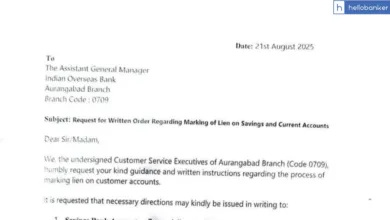Rs 1.2 Trillion Liability: How Sovereign Gold Bond (SGB) Scheme Became a Big Problem for the Government?

| ➡️ Get instant news updates on Whatsapp. Click here to join our Whatsapp Group. |
Recently, The Government of India announced to close the Sovereign Gold Bond (SGB) scheme. But why the government closed this scheme? What happened suddenly? In this article, we will tell you the reason of this and how this SGB gold scheme has become a big financial problem for the Government of India. Read the full article to understand the whole story.
The Indian government launched the Sovereign Gold Bond (SGB) scheme in 2015 with the goal of reducing gold imports and encouraging people to invest in gold through bonds instead of buying physical gold like jewellery and coins. The scheme initially performed well, and many people invested in SGBs.
However, nearly a decade later, gold imports have not decreased. Instead, India continues to be one of the world’s largest importers of gold. In FY 2023-24, India’s gold imports were worth $49 billion, a 30% increase from the previous year. This means that the government’s plan did not work as expected.
Why Did the SGB Scheme Fail to Reduce Gold Imports?
The government thought that by offering 2.75% annual interest (later reduced to 2.5%), people would prefer SGBs over physical gold. But in India, gold is not just an investment; it is deeply connected to traditions, weddings, and festivals. As a result:
- People invested in SGBs but also continued buying jewellery and gold coins.
- Gold imports increased instead of decreasing.
This miscalculation meant that the government’s main goal of reducing imports was not achieved.
The Unexpected Rise in Gold Prices and Its Impact
When the first SGB was issued in November 2015, the price of gold was around ₹2,500 per gram. Today, in 2025, the price has crossed ₹9,000 per gram, meaning gold prices have increased by more than 3.5 times.
Similarly, in the international market, gold was priced at $1,150 per ounce in 2015, but by 2025, it has gone beyond $3,000 per ounce.
The government did not expect such a sharp rise in gold prices. Now, as the bonds mature, the government has to return money to investors based on the current high price. This is putting a huge financial burden on the government.
How SGB has become a Big Financial Problem for Govt?
Since 2015, the government has issued SGBs 67 times, amounting to 147 tonnes of gold. As of now, its liabilities (money it owes to investors) have reached 132 tonnes, worth ₹1.2 trillion ($13 billion). These bonds will mature by 2032, meaning the government will have to pay huge amounts in the coming years.
Even though the SGB scheme was supposed to reduce imports, India still imports around $37 billion worth of gold every year. To control this, the government:
- Increased import duty to 15% in 2022, making gold more expensive.
- This led to a rise in gold smuggling.
- Later, in 2023, the duty was reduced to 6%, but by then, the damage was already done.
These unstable policies weakened the effectiveness of the SGB scheme.
RBI’s Gold Holdings
The Reserve Bank of India (RBI) now holds 879 tonnes of gold, which is 11.5% of its total foreign exchange reserves—the highest level ever. This indicates that the government and RBI are facing financial pressure due to the SGB scheme.
- In FY 2024-25, the government has not issued any new SGBs.
- In FY 2023-24, it raised ₹270 billion through SGBs, but increasing liabilities are making it difficult to continue the scheme.
Conclusion: A Costly Mistake for the Government
The SGB scheme looked great in theory, but in reality, it became a financial burden for the government. While investors made huge profits, the government’s financial position weakened.
The biggest mistake was underestimating Indians’ strong emotional and cultural attachment to gold. Instead of replacing physical gold with bonds, people bought both. As a result, the scheme failed to achieve its main purpose, and the government now faces huge financial challenges.
